The Brazos Review: AMD's E-350 Supplants ION for mini-ITX
by Anand Lal Shimpi on January 27, 2011 6:08 PM ESTAMD has been curiously absent from the value netbook and nettop segments since Atom’s arrival nearly three years ago. These markets are highly profitable only for component vendors, as the OEMs that sell netbooks and nettops must survive on very slim margins in order to hit aggressive price points. It wasn’t too long ago that we were shocked by $699 desktop PCs, but to now be able to get a fully functioning portable PC with display at below $300 is impressive. In order for the profit equation to work out however, you can’t simply scale down a larger chip - you need an architecture targeted specifically at the type of very light workloads you expect to encounter in these segments. Underclocking and undervolting an architecture targeted at high end desktops or servers won’t cut it.
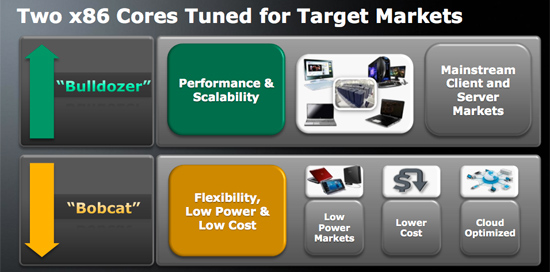
Generally a single microprocessor architecture can cover an order of magnitude of power envelopes. You can take an architecture from 10W - 100W using clock speed, voltage scaling and disabling features (e.g. cutting cache sizes). You can’t efficiently take a 100W architecture and scale it down to 1W. Intel realized this with Atom, and what resulted was a new architecture designed to span the 0.5W - 5W range. Given the constraints of the process (Atom was built at 45nm) and a desire to keep die size down to a minimum (and thus maximize profits), Intel went with a dual-issue in-order architecture reminiscent of the old Pentium - but with a modern twist.
AMD came to the same realization. For it to compete in these value markets, AMD couldn’t rely on its existing Phenom II derived architectures. The Phenom II and its relatives currently span a range of TDPs from 9W to 140W, and at the lower end of that spectrum we’re talking about some very low clock speeds and performance targets. Getting down to 1W was out of the question without a separate design.
What AMD came up with was a core called Bobcat, initially targeted for netbooks, notebooks, nettops and entry level desktops. Architecturally Bobcat is a significant step ahead of Atom: while still dual-issue, it features an out-of-order execution engine making it the Pentium Pro to Atom’s Pentium.
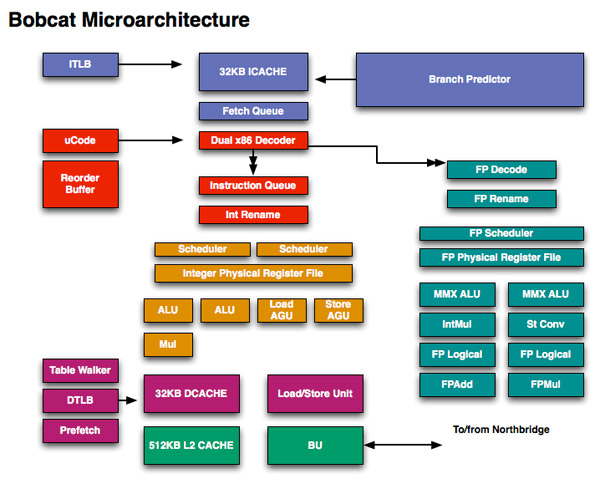
It isn’t just CPU architecture that AMD surpassed Atom with, the first incarnation of Bobcat is an integrated SoC with on-die DirectX 11 GPU. AMD calls this combination a Fusion APU (Accelerated Processing Unit) as it places both a CPU and GPU on a single die. The possible CPU/GPU combinations for Bobcat based APUs are listed in the table below:
| AMD Brazos Lineup | ||||||||
| APU Model | Number of Bobcat Cores | CPU Clock Speed | GPU | Number of GPU Cores | GPU Clock Speed | TDP | ||
| AMD E-350 | 2 | 1.6GHz | Radeon HD 6310 | 80 | 500MHz | 18W | ||
| AMD E-240 | 1 | 1.5GHz | Radeon HD 6310 | 80 | 500MHz | 18W | ||
| AMD C-50 | 2 | 1.0GHz | Radeon HD 6250 | 80 | 280MHz | 9W | ||
| AMD C-30 | 1 | 1.2GHz | Radeon HD 6250 | 80 | 280MHz | 9W | ||
AMD avoided branding its first APUs, they’re simply the AMD E-series and C-series Fusion APUs. The emphasis isn’t on the CPU or the GPU in this case, just the company name and a model number.
| CPU Specification Comparison | ||||||||
| CPU | Manufacturing Process | Cores | Transistor Count | Die Size | ||||
| AMD Zacate | 40nm | 2 | ? | 75 mm2 | ||||
| AMD Thuban 6C | 45nm | 6 | 904M | 346mm2 | ||||
| AMD Deneb 4C | 45nm | 4 | 758M | 258mm2 | ||||
| Intel Gulftown 6C | 32nm | 6 | 1.17B | 240mm2 | ||||
| Intel Nehalem/Bloomfield 4C | 45nm | 4 | 731M | 263mm2 | ||||
| Intel Sandy Bridge 4C | 32nm | 4 | 995M | 216mm2 | ||||
| Intel Lynnfield 4C | 45nm | 4 | 774M | 296mm2 | ||||
| Intel Clarkdale 2C | 32nm | 2 | 384M | 81mm2 | ||||
| Intel Sandy Bridge 2C (GT1) | 32nm | 2 | 504M | 131mm2 | ||||
| Intel Sandy Bridge 2C (GT2) | 32nm | 2 | 624M | 149mm2 | ||||
These APUs do need the aid of an additional chip - the Hudson Fusion Controller Hub (FCH). The FCH adds support for things like SATA, USB, Ethernet and Audio.The Hudson FCH is very tiny measuring approximately 4mm x 7mm for a total die size of around 28mm2.
The combination of these Bobcat based APUs and the FCH is called the Brazos platform.
Late last year AMD invited me to spend several hours with a Brazos system at its brand new campus in Austin, TX. While the preview gave us some insight into what we could expect from Brazos, I didn’t have enough time to really dive in as much as I would’ve liked to.
Earlier this month, AMD officially launched Brazos with hardware expected sometime this quarter. For the past couple of weeks I’ve been testing a Brazos mini-ITX motherboard from MSI and today, it’s time to break the silence and share the results. They are quite good.


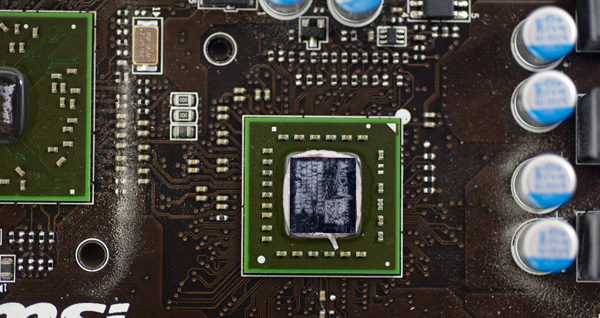
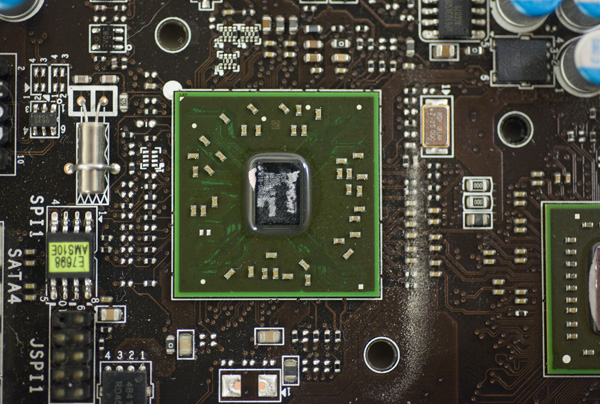
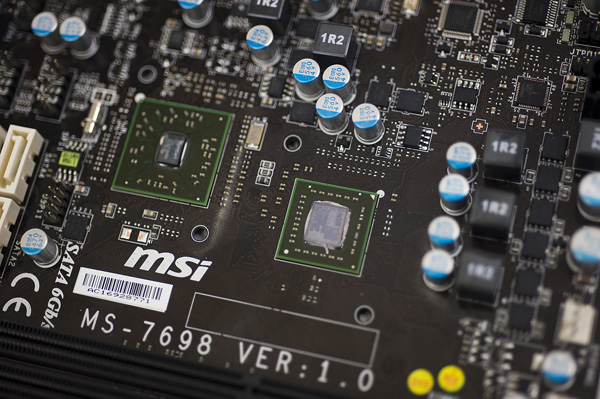
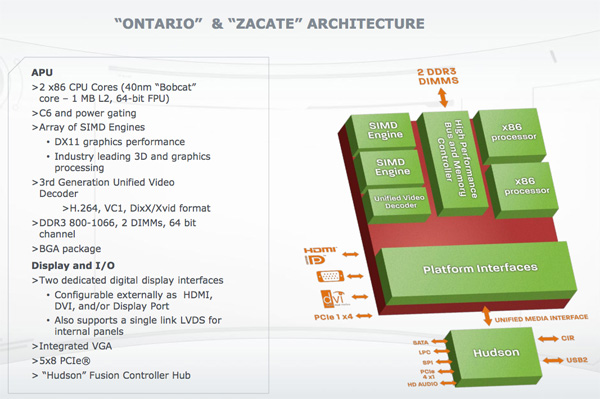








176 Comments
View All Comments
flyck - Friday, January 28, 2011 - link
at idle the SB cpu uses 30% more power (or 4W) (2400S), during playback the difference between the cpu will also be around 1W.the chip consumption is however not known.
duploxxx - Friday, January 28, 2011 - link
Nice review, always a good review from Anandtech, thxFor now brazos could use only another cpu speedbump to totally destroy all atom based solutions and even more get into the ULV regions. A wider APU platform offer (different clockspeeds) would be better though.
To crush next gen Atom I think AMD knows what to do, update like 69xx series on uarch for gpu, add higher speed or more core in the new 28nm package all combined with turbo modes by the end of this year and Intel will never have a chance unless they bring a new uarch.
bjacobson - Saturday, January 29, 2011 - link
meh, they can just compete with the ULV Pentiums.To me that's what Brazos is competing with performance wise-- of course it stomps Atom...so what's next? ULV chips...and it has a much harder time with them.
beginner99 - Friday, January 28, 2011 - link
...as mentioned before I do not see the benefit of playing MW 2 at 20 fps on a 1024x768 resolution. Who will do that? probably no one because it is still unplayable.I mean this thing is nice and better than Atom (assuming same price) but I think the GPU is a waste of die space. Why not beef up the decode engine? I mean this thing will be used mainly for media stuff and not for gaming. I mean not being able to play 1080p youtube perfectly is already fail for a nettop/htpc because that is a very, very likely usage scenario (1080p tv or screen).
More fixed function hardware fro media would be better maybe even something like QuickSync so you could actually trans-code on your htpc. Or said otherwise functionality you get with these broadcom cards, which quite a few atom system have.
I would still 100% choose this over Atom.
nitrousoxide - Friday, January 28, 2011 - link
Then it won't be an APU :)And AMD doesn't have smaller GPU...HD5400 Cedar is the smallest available design AMD has lol
While it can't run Modern Wardare 2, I'm quite satisfied with the fact that it can run L4D2, Warcraft 3, Starcraft 2 and I can even play Command and Conquer Red Alert 3 tuned to "medium".
sebanab - Monday, January 31, 2011 - link
I also think the 3D functions of the chip might as well not be there at all.But they should come in handy for Aero effects in Win7 and why not , Win8.
Shadowmaster625 - Monday, January 31, 2011 - link
1080p youtube is just too slow to be practical for anything other than watching trailers for the really big movies that come once a year, like Avatar. Most people's internet connections simply cannot keep up to stream realtime 1080p. And even if you did have the bandwidth, that dont mean that youtube is going to have it.720p is much more reasonable, though even then comcast 20mbps + youtube have trouble keeping that pipe filled most of the time. Most of the time I go with 480p just because less wait is more important than the added quality.
krumme - Friday, January 28, 2011 - link
I like the review, epecially the new HD bm and the recommandations. Looking at the hd bm themselves one had to wonder if 7200rpm was not enough for the bobcat? but i guess there is room for personal interpretation. I think Anand really likes his ssd more than i do :)I still feel the emphasis on multithreaded and heavy workloads is a little to much, and the same for the emphasis on the gaming side. But ofcourse there must be some readers that will use this for for gaming.
I hope AMD get this bobcat on lower leaking gf 32nm process, so we can have even better battery life.
bjacobson - Saturday, January 29, 2011 - link
You know I've found my 160GB 5400RPM drive to be plenty fast for my Atom. I doubt a 7200RPM would be too terribly much of a bottleneck. Might impact battery life though compared with SSD on a laptop.I found the multi-threading very useful-- it showed us that even in perfect-scalable applications (Cinebench), the e350 still stomps a dual core dual threaded Atom. That's the conclusive evidence I was looking for that this is a better chip.
macs - Friday, January 28, 2011 - link
My thought:- AMD E-350 itx board: 100-130 $
- Intel Sandy Bridge Pentium G620T (rumored release date 2/27/11, dual core, 35w TDP) 70$ paired with a H67 ITX board like the Foxconn one (75$) TOT:145$
I suspect that we will have similar power cosumption (probably Idle is even better for Intel) but the performance are way better in Sandy Bridge and totally worth the 10/50$ price difference.
Am I wrong? (sorry for my poor English)